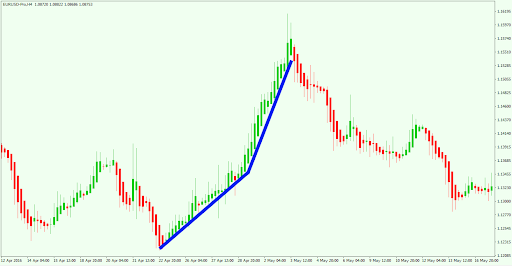
Table of Contents
Heikin Ashi Chart is one of the most popular Candlestick Charts and is used by traders worldwide. The chart offers a high-resolution picture of market sentiment and can be interpreted to provide higher accuracy than traditional types of charts. Though Heikin Ashi is not meant for day trading, it can help you determine long-term trends in the market. This article will look at various ways you can trade with the Heikin Ashi Chart.
How to Trade With the Heikin Ashi Chart
1) Know when to enter the trade
Most traders do not understand the need to enter a trade. When trading with the Heikin Chart, traders should enter when a Heikin Ashi “cross” occurs and then look for more confirmation of this cross.
2) Learn to read the price action
Price action is the most important technical analysis tool when trading with Heikin Ashi. The chart will show you where the price is likely to go and what it will do next. For instance, if the price moves above a resistance level, it will likely make a bearish breakout or move back into a trading range. If the price moves below a support level, it will most likely move up into resistance or reverse. Furthermore, when the price breaks out of a trading range, it will likely move into a new and higher trend. Lastly, when in a bearish trend and if the price is about to break below a support level, continue short-term or short-term long trades until that support level is broken.
3) Use the chart to predict future moves
After determining where the price will likely move next, you must understand which direction it will move in. This is where you need to use your knowledge of technical analysis. If the price has broken a trend-line, it is likely to make a bullish breakout. However, bearish breakout patterns do exist, and if the price breaks below a support level and bounces back, it is likely to reverse and make a bearish move.
4) Trade in conjunction with other charts
When using the Heikin Ashi for trading, you should use other charts to determine the best timing for your trade. For instance, you can use the Heikin chart to determine trend lines and support/resistance levels. You should then use traditional charts (such as the line chart) to determine when price moves into a new trend or follows through after breaking out of a support/resistance level.
5) Understand and use the Fibonacci retracement tool
The Heikin Chart can be used in conjunction with Fibonacci retracement. You can use this feature to determine what price movements it is likely to follow after price moves according to a trend. For instance, if a stock has moved from $22.45 and then breaks out of $23.00, you should anticipate that it will not make a strong move because of the resistance at $24.00. However, it is likely to follow through and make a higher low at $24.25 or thereabouts. On the other hand, if the stock has broken out from $23.00 and then moves up above $24.00, you can expect that it will make a strong move because of the support at $24.25 and $25.00-35.00, or thereabouts.
6) Know when to exit the trade
The Heikin Chart can be used for day trading, though it is not the best for that purpose. You must use traditional charts (such as line, candlestick, and bar charts) to determine the best timing to exit a trade. For instance, if you lag a stock too long and it moves down through support levels, then it will likely reverse and make a bounce back up through resistance levels. If you want to cash in on the move down, you should enter a new trade-in in line with the trend. However, if you prefer to get out of your current long position and re-enter a new long trade, then wait for the stock to break through resistance levels and make an upward move. If a stock breaks through resistance levels and then makes a strong bounce back up, it is likely to continue moving up.
7) Use stop-loss orders
You should use stop-loss orders when trading with the Heikin Chart. The chart can help you determine where a stock is likely to reverse from. For instance, if it moves down through support levels, it will likely bounce back up through resistance levels. If you want to invest in a stock that has moved down through $50 and then bounces back up to $53, then place a stop-loss order at $49.50.
8) Look for reversal signals
When using the Chart, you should look for reversal signals to exit your current trade and then enter a new one if it seems that it is most likely to do so. You must use other types of charts (such as bar, line, and a candlestick) to see if these signals are confirmed or not. For instance, the price may have made a move down to $49.10 and then bounced back up to $51.70. However, if it moves back down through $51.70, it is likely to reverse because of the strong support at $50-40 (or thereabouts).
In conclusion, the Heikin Ashi Chart can be used to both trade and analyze. It is important to know when to enter a trade and then look for the actual price. The Fibonacci tool can also be useful for determining what price movements it is likely to follow after making a move according to a trend. Lastly, when exiting a trade, always make sure you use stop-loss orders to limit your losses.




